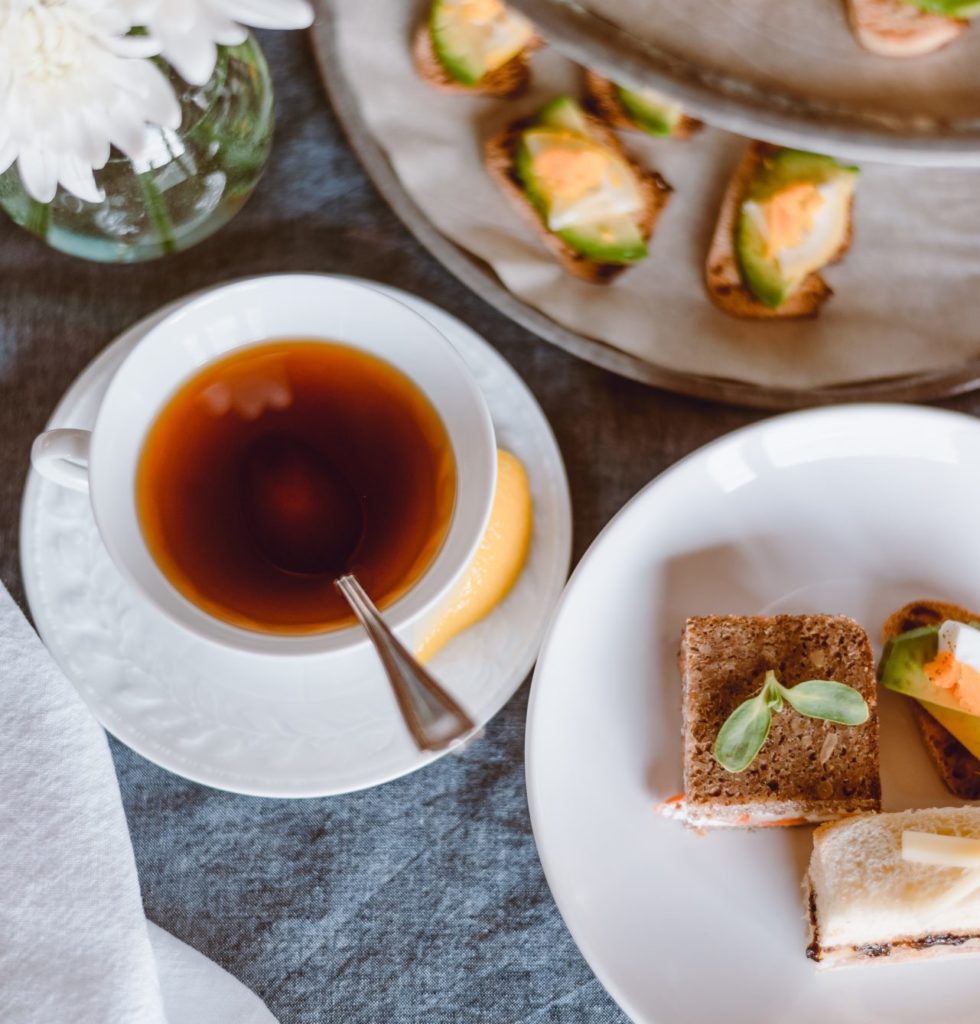
The origins of afternoon tea
Afternoon tea actually started as a social event for aristocratic families in 1840, when the seventh Duchess of Bedford, Anna Russell, was unsatisfied with the change of her meal times. Aristocratic families would have just two meals a day: a substantial breakfast and evening meal served after 7pm. However, the duchess started complaining about a ‘sinking feeling’ she’d get at around 4pm every day, so began to order a tray of tea, bread and butter, and cake to her room to tide her over until dinner. She would then invite her friends to join her at Woburn Abbey, a historical house in Bedfordshire. The trend took off significantly after the duchess shared her secret with lifelong friend Queen Victoria, who started to enjoy cake with buttercream and fresh raspberries (later named, in tribute, as a Victoria Sponge) with a cup of tea herself. Soon after this it became a favourite pastime of the upper classes.

These occasions were either held in drawing rooms, similar to our own at Sandon Hall, or outside in extravagant high society gardens during summer. Ladies would arrive for afternoon tea dressed in their finest clothes, quickly becoming a popular social event for the wealthy. In fact, tea was quite expensive at this point, and considered a delicacy in itself which only aristocratic families could afford. As a result, serving it to a large number of guests in the grounds of your home was a great way to display your wealth.
Afternoon teas transformed into tea dances
By the 1880s, afternoon tea was popular all over England, and as the beverage became more affordable the middle classes were able to participate in the tradition too. Music soon became a big feature of afternoon teas, especially for the wealthy, who would host full orchestras in their extravagant gardens while enjoying finger sandwiches and cakes. Meanwhile, middle class citizens would attend tea dances in hotels as a way to socialise and learn the latest ballroom dancing trends, sitting down in between numbers for a slice of cake and a cup of tea.

What makes a proper traditional afternoon tea?
A proper traditional afternoon tea in the UK is often served in hotels or historically significant houses. Attention to manners is strongly expected at a traditional event of this nature, including rules of etiquette which mandate that teacups should only be raised while drinking, and that your pinkie finger mustn’t poke out. The meal would include a selection of loose-leaf teas like Assam, Earl Grey, Darjeeling, and Lapsang Souchong, which are served in elegant silver teapots and poured into teacups. Sandwiches with typical English fillings such as cucumber and egg mayonnaise are cut into fingers, with the crusts removed, and presented on a cake stand with bite-size cakes and pastries.
To enjoy a lovely spot of afternoon tea yourself, why not pop down to Sandon Hall? You can enjoy the full experience as part of our private house and garden tour event, which also includes exploring the 1852 manor house, its stunning gardens and learning about the history of the Harrowby’s ancestral home. Afternoon tea is included in the price of admission, though you can upgrade to a sparkling afternoon tea with an alcoholic beverage for an extra £5 per person.


